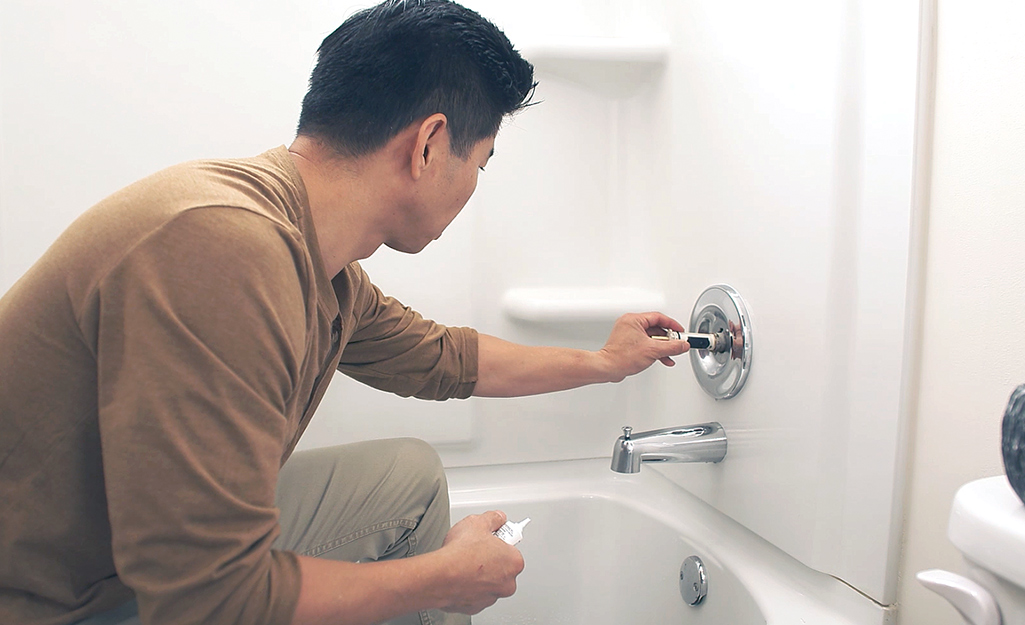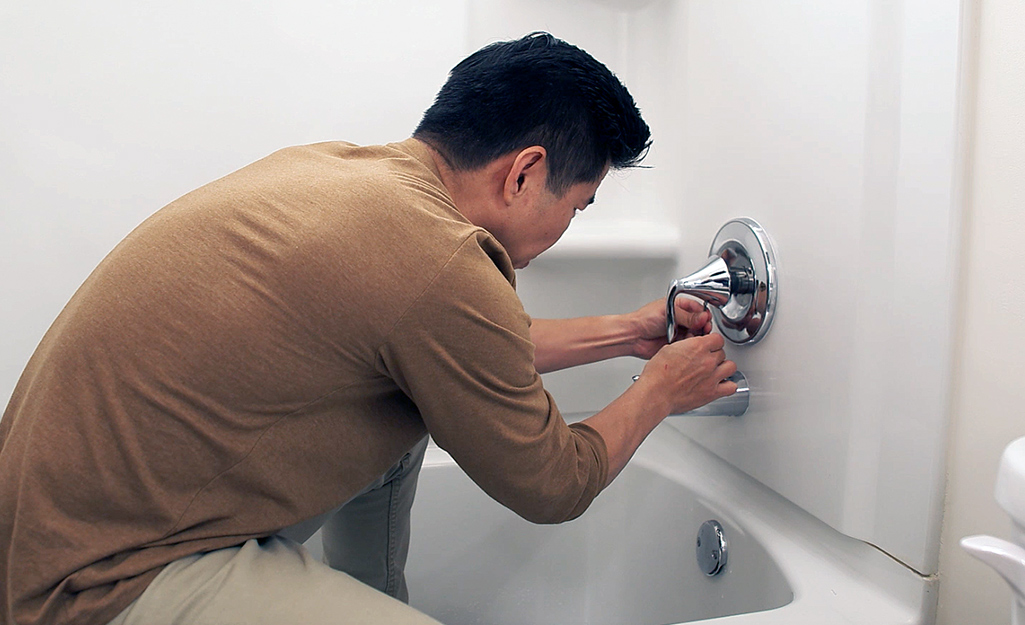When It's Important to Resolve a Leaking Faucet
When It's Important to Resolve a Leaking Faucet
Blog Article
Nearly everybody may have their personal ideas when it comes to Water Dripping from Faucet: Why and How to Fix.

Trickling taps may look like a minor hassle, but their influence exceeds just the annoyance of the audio. From drainage to incurring unneeded monetary expenses and health dangers, ignoring a dripping tap can result in various consequences. In this post, we'll look into why it's crucial to address this common household issue quickly and properly.
Wastage of Water
Environmental Effect
Leaking taps add considerably to water wastage. According to the Environmental Protection Agency (EPA), a single tap trickling at one drip per second can squander greater than 3,000 gallons of water each year. This not only stress water resources however additionally impacts ecological communities and wild animals dependent on them.
Step-by-Step Guide to Repairing a Dripping Faucet
Tools Required
Prior to trying to deal with a trickling tap, gather the required devices, including a flexible wrench, screwdrivers, replacement components (such as washers or cartridges), and plumber's tape.
Common Tap Issues and Their Solutions
Determine the kind of faucet and the details problem causing the drip. Usual issues include damaged washers, rusty valve seats, or faulty O-rings. Describe manufacturer guidelines or on the internet tutorials for detailed assistance on fixings.
Financial Expenses
Raised Water Bills
Past the ecological impact, dripping faucets can blow up water costs significantly. The gathered wastage in time equates right into higher utility expenditures, which might have been stayed clear of with prompt fixings.
Possible Residential Or Commercial Property Damage
Additionally, extended dripping can lead to harm to components and surface areas surrounding the tap. Water build-up can create discoloration, corrosion, and also structural concerns if left ignored, causing added repair service costs.
Health Problems
Mold and Mildew Development
The constant presence of dampness from a dripping tap develops an optimal setting for mold and mildew and mildew growth. These fungi not only endanger indoor air top quality but additionally pose health risks, especially for individuals with breathing conditions or allergic reactions.
Waterborne Conditions
Stationary water in trickling taps can end up being a breeding place for germs and other pathogens, increasing the threat of waterborne conditions. Pollutants such as Legionella germs thrive in stagnant water, potentially bring about major health problems when ingested or breathed in.
Do it yourself vs. Professional Repair
Advantages and disadvantages of Do It Yourself Repair
While some may try to deal with a leaking faucet themselves, DIY repair work come with their own set of obstacles. Without proper expertise and tools, do it yourself attempts can aggravate the issue or result in insufficient fixings, lengthening the problem.
Benefits of Employing a Professional Plumber
Working with an expert plumber ensures that the underlying source of the leaking tap is attended to effectively. Plumbing professionals possess the expertise and devices to detect and fix faucet issues effectively, conserving time and minimizing the danger of additional damages.
Ecological Responsibility
Individual Contribution to Conservation
Taking obligation for taking care of trickling taps lines up with wider efforts toward water conservation and environmental sustainability. Every individual's actions jointly make a substantial influence on maintaining priceless resources.
Sustainable Living Practices
By prioritizing prompt repairs and taking on water-saving routines, individuals contribute to lasting living methods that benefit both existing and future generations.
Preventive Measures
Regular Upkeep Tips
To prevent trickling taps, carry out regular maintenance such as cleaning aerators, checking for leaks, and changing damaged parts without delay. Furthermore, take into consideration setting up water-saving tools or upgrading to much more reliable components.
Relevance of Prompt Repair Works
Resolving dripping faucets as soon as they're observed prevents further water waste and prospective damages, inevitably conserving both water and cash in the future.
Impact on Residential Property Value
Assumption of Well-Maintained Building
Preserving a residential or commercial property in good condition, including addressing upkeep concerns like trickling faucets, enhances its regarded worth and value among potential customers or occupants.
Influence on Resale Worth
Qualities with well-kept plumbing fixtures, including faucets, command greater resale values in the realty market. Addressing leaking taps can add to a positive perception during residential property evaluations and arrangements.
Conclusion
Attending to a dripping faucet surpasses mere benefit; it's a crucial step toward preserving water, reducing monetary expenses, and guarding health and residential property. Whether via do it yourself repairs or expert support, doing something about it to fix dripping faucets is a small yet impactful method to advertise responsible stewardship of sources and add to a much healthier, more sustainable future.
Most Common Reasons for a Leaky Faucet and How to Stop the Drip
Whether it’s your kitchen faucet leaking or a bathroom faucet leaking, one leaky faucet can waste anywhere from three to 30 gallons of water every single day. If the constant drip-drip-drip doesn’t get your attention, your water bill will. The good news is that, by following a few simple steps, chances are pretty good you can fix the problem yourself.
Why is it dripping?
Before you start taking things apart, let’s break down some of the most common causes of a leaky faucet.
Bad O-ring.
A cartridge is a valve that controls the flow of water into the faucet spout. On cartridge faucets there’s an O-ring—the little disc attached to the stem screw that holds the faucet handle in place. If it’s loose or worn-out, it can cause your sink handle to leak. Of course, the cartridge itself could be worn out. If that’s the case, make sure you replace it with the exact same kind.
Corroded valve seat.
The valve seat connects the faucet and the spout. If the leak seems to be coming from the spout, it might be because a buildup of water sediment has corroded the valve seat.
Worn-out washers or seals.
A leaky spout could be caused by a bad washer that rests against the valve seat. It’s just a matter of time before friction takes its toll. It could also be the wrong size washer or one that’s been installed incorrectly. Water sediments can also corrode inlet and outlet seals.
Water pressure.
If the faucet only drips now and then, or when you turn the handles a certain way, you should probably check your home’s water pressure.
Loose or broken parts.
The adjusting ring and packing nuts in the stream screw can become loose over time, causing your sink handle to leak. Try tightening or replacing the packing nut. If the leak is coming from the pipes underneath the sink, you probably have a broken pipe or fitting. If that’s the case, you should definitely call a plumber.
Know your faucet.
Faucets come in a variety of types. Each one has its own assembly—and its own possible causes of leaks. Learning about the four most common kinds of faucets will help you know how to take them apart and make any repairs.
How to stop a leaky faucet
Fixing that leaky faucet doesn’t have to take a lot of time, money, or expertise. It’s usually a simple matter of replacing a worn-out washer or gasket, a loose O ring, or another part. Chances are really good you can do this yourself if you follow these simple steps.
Shut off the water.
Before you tackle the faucet, cut off the water supply to the sink. There should be one valve for hot and one for cold. Hand-turn them clockwise with your hands till they close. If there are no valves under the sink, head to the basement and shut off the main water supply to the house. Then turn on the faucet until it empties out the water that’s still in the line and you’re ready to start. It’s a good idea to cover the sink drain with a plug or a rag so you don’t lose any small pieces and parts while you’re working.

Do you like reading about Should I Repair or Replace a Leaky Faucet?? Try leaving feedback below. We would be happy to hear your thinking about this review. In hopes that you come back again in the near future. Feel free to pause to promote this blog posting if you enjoyed it. I am grateful for your time. Kindly stop by our website back soon.
Report this page